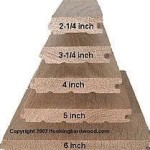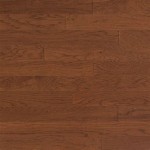Spanish Tile Flooring: A Comprehensive Guide
Spanish tile flooring is a popular choice for homeowners and designers due to its distinctive aesthetic, durability, and versatility. This type of flooring encompasses a wide array of styles, materials, and patterns, each contributing to a unique visual appeal. Understanding the characteristics, benefits, and installation considerations of Spanish tile is crucial for making informed decisions when selecting flooring for any project.
The term "Spanish tile" is often used broadly to describe tiles that evoke the style and aesthetic traditions of Spain. This can include tiles made of clay, ceramic, or porcelain, and they are often characterized by vibrant colors, intricate patterns, and a rustic or Mediterranean feel. The history of Spanish tile is deeply rooted in the country’s rich cultural heritage, influenced by Moorish, Roman, and European artistic traditions. This blend of influences is evident in the diversity of designs and motifs found in Spanish tile flooring.
Spanish tiles are not exclusively manufactured in Spain. Many manufacturers worldwide produce tiles that emulate the Spanish aesthetic, making them readily accessible to consumers globally. The key defining factor remains the visual style and inspiration drawn from traditional Spanish designs, regardless of the tile's origin.
Key Characteristics and Styles of Spanish Tile Flooring
Spanish tiles are distinguished by several key characteristics that contribute to their unique aesthetic appeal. These features often include the material used, the colors and patterns incorporated, and the overall style that the tile evokes. Understanding these characteristics is essential for selecting the appropriate tile for a specific design project.
Clay tiles are one of the most traditional materials used in Spanish tile flooring. They are known for their natural warmth and rustic appearance. Clay tiles are often unglazed, which gives them a porous texture that absorbs moisture. Therefore, they typically require sealing to protect them from stains and water damage. The inherent variations in color and texture contribute to the natural beauty of clay tiles, creating a unique and timeless look. The color palette for clay tiles typically revolves around earthy tones like reds, oranges, and browns, further enhancing their rustic charm.
Ceramic tiles are another popular choice for Spanish-style flooring. They are made from a mixture of clay and other materials, which are then fired at high temperatures. Ceramic tiles are generally more durable and less porous than clay tiles. They can be glazed, which provides a protective layer that makes them resistant to stains and water damage. Glazed ceramic tiles are available in a wide range of colors and patterns, offering greater design flexibility. They often mimic the look of traditional Spanish designs, including geometric patterns, floral motifs, and intricate borders.
Porcelain tiles are a type of ceramic tile that is made from a finer clay and fired at even higher temperatures. This process results in a tile that is incredibly dense, durable, and resistant to moisture. Porcelain tiles are an excellent choice for high-traffic areas and outdoor applications. They are also available in a wide range of colors, patterns, and sizes, allowing for diverse design options. Porcelain tiles can be manufactured to replicate the look of natural stone, wood, or even hand-painted Spanish tiles, offering a versatile and cost-effective alternative.
The patterns and color palettes of Spanish tiles are often inspired by traditional Spanish art and architecture. Geometric patterns, such as squares, triangles, and octagons, are commonly used to create intricate and visually striking designs. Floral motifs, often depicting stylized flowers and vines, are another popular element. Mosaics, which involve assembling small pieces of tile to create a larger image, are also frequently employed to add detail and visual interest. The color palettes typically include warm, earthy tones, such as terracotta, ochre, and deep reds, as well as vibrant blues, greens, and yellows. These colors evoke the sun-drenched landscapes and rich cultural heritage of Spain.
Several distinct styles of Spanish tile flooring exist, each offering a unique aesthetic. One popular style is the "Talavera" look, characterized by hand-painted designs with bold colors and intricate details. These tiles often depict scenes from daily life, religious figures, or traditional Spanish motifs. Another style is the "Encaustic" look, which features patterned tiles made by inlaying different colored clays. Encaustic tiles have a distinctive, vintage appearance and are often used in historic renovations or to add a touch of old-world charm to a space. "Rustic" Spanish tiles, which often feature uneven surfaces and distressed edges, create a more casual and relaxed atmosphere. These tiles are often used in kitchens, bathrooms, and outdoor patios to evoke a sense of warmth and authenticity.
Advantages of Choosing Spanish Tile Flooring
Spanish tile flooring offers a multitude of advantages that make it a desirable choice for various applications. Beyond its aesthetic appeal, this type of flooring boasts durability, versatility, and ease of maintenance, contributing to both its long-term value and practicality.
One of the primary advantages of Spanish tile is its durability. Both ceramic and porcelain tiles are known for their resistance to scratches, stains, and wear. This makes them suitable for high-traffic areas, such as entryways, hallways, and kitchens, where they can withstand constant use without showing significant signs of wear and tear. Porcelain tiles, in particular, are exceptionally durable and can even be used in commercial settings due to their high resistance to abrasion and impact. Clay tiles, while less durable than ceramic and porcelain, can still provide a long-lasting flooring solution when properly sealed and maintained.
Spanish tile flooring is also relatively easy to maintain. Glazed ceramic and porcelain tiles are non-porous, which means they do not readily absorb spills or stains. This makes them easy to clean with a damp mop and mild detergent. Unlike carpet or hardwood flooring, tile does not require frequent deep cleaning or special treatments. Regular sweeping or vacuuming to remove dirt and debris is generally sufficient to keep tile flooring looking its best. Clay tiles, which are more porous, require periodic sealing to protect them from stains and water damage. With proper sealing, clay tiles can also be easily maintained.
Versatility is another key advantage of Spanish tile flooring. The wide range of styles, colors, patterns, and sizes available allows for diverse design options. Spanish tiles can be used to create a variety of looks, from traditional and rustic to modern and contemporary. They can be installed in various rooms throughout the house, including kitchens, bathrooms, living rooms, and bedrooms. Spanish tiles are also suitable for outdoor applications, such as patios, decks, and pool areas. Their resistance to moisture and temperature fluctuations makes them a durable and attractive choice for outdoor spaces.
The water resistance of Spanish tile is a significant benefit, particularly in areas prone to moisture, such as bathrooms and kitchens. Porcelain tiles, due to their low porosity, are virtually waterproof, making them an ideal choice for showers, bathrooms, and other wet areas. Ceramic tiles are also water-resistant, although they may require sealing in areas with high moisture exposure. Clay tiles, while more porous, can be made water-resistant with proper sealing. The water resistance of Spanish tile helps prevent mold and mildew growth, which can be a common problem in damp environments.
Spanish tile flooring can also be a cost-effective choice in the long run. While the initial cost of installation may be higher than some other flooring options, the durability and low maintenance requirements of tile can result in significant savings over time. Tile does not need to be replaced as frequently as carpet or hardwood, and it does not require costly cleaning products or treatments. The long lifespan of Spanish tile makes it a worthwhile investment for homeowners looking for a durable and low-maintenance flooring solution.
Installation Considerations for Spanish Tile Flooring
Proper installation is crucial for ensuring the longevity and performance of Spanish tile flooring. Several key considerations must be taken into account during the installation process, including subfloor preparation, tile layout, grout selection, and sealing.
Subfloor preparation is a critical first step in the installation process. The subfloor must be clean, level, and structurally sound to provide a stable base for the tile. Any imperfections in the subfloor, such as cracks, unevenness, or loose boards, must be addressed before tile installation begins. A self-leveling compound can be used to smooth out uneven surfaces. If the subfloor is significantly damaged, it may need to be replaced entirely. Proper subfloor preparation ensures that the tile will be evenly supported and prevent cracks or other damage from occurring over time.
The layout of the tile should be carefully planned before installation begins. Consider the size and shape of the room, as well as the desired aesthetic. A symmetrical layout is often preferred, but asymmetrical layouts can also be used to create a more modern or unique look. The tile should be arranged to minimize cuts and waste. Begin by finding the center point of the room and working outwards towards the walls. This ensures that the tile is evenly distributed and that any cuts are made along the edges of the room, where they are less noticeable.
The choice of grout can significantly impact the overall look and performance of Spanish tile flooring. Grout is the material used to fill the spaces between the tiles, and it plays a crucial role in protecting the edges of the tile from damage. Grout is available in a wide range of colors, and the color should be carefully selected to complement the tile. A contrasting grout color can create a bold and dramatic look, while a matching grout color can create a more seamless and subtle effect. Epoxy grout is a more durable and water-resistant option than traditional cement-based grout. Epoxy grout is particularly well-suited for high-moisture areas, such as bathrooms and kitchens.
Sealing is an important step for certain types of Spanish tile flooring, particularly clay tiles. Sealing helps to protect the tile from stains, water damage, and wear. A penetrating sealant should be applied to the tile before grouting to prevent the grout from staining the tile. After grouting, the tile should be sealed again to protect the grout from stains and moisture. The frequency of sealing will depend on the type of tile and the level of traffic in the area. In general, clay tiles should be sealed every one to two years, while ceramic and porcelain tiles may only need to be sealed every three to five years.
Hiring a professional tile installer is recommended, especially for complex installations or when working with delicate or expensive tiles. A professional installer has the knowledge, experience, and tools necessary to ensure that the tile is installed correctly and to avoid costly mistakes. A professional installer can also provide guidance on tile selection, layout, and maintenance. While a DIY installation may seem like a cost-saving option, improper installation can lead to problems down the line, such as cracked tiles, uneven surfaces, and water damage. Investing in professional installation is a worthwhile investment that can protect the longevity and beauty of Spanish tile flooring.

Spanish Floor Tile Avente

Arabesque Spanish Mission Red Tile San Felipe Flooring Pattern

Rustico Tile 6x12 Rectangle Spanish Mission Red Terracotta Tiles

15 Coolest Spanish Tile Floor Ideas Country Floors Of America Llc

Spanish Floor Tile Avente

Spotlight Spanish Tile Centsational Style

March 2024 Spanish Floor Tile Patio Tiles Flooring

5 75 X 12 Unsealed Spanish Mission Red Floor Tile Casa

Advice On Spanish Tile Photos S Rustico

Modern Spanish Tile Ideas To Transform Your Space
Related Posts








